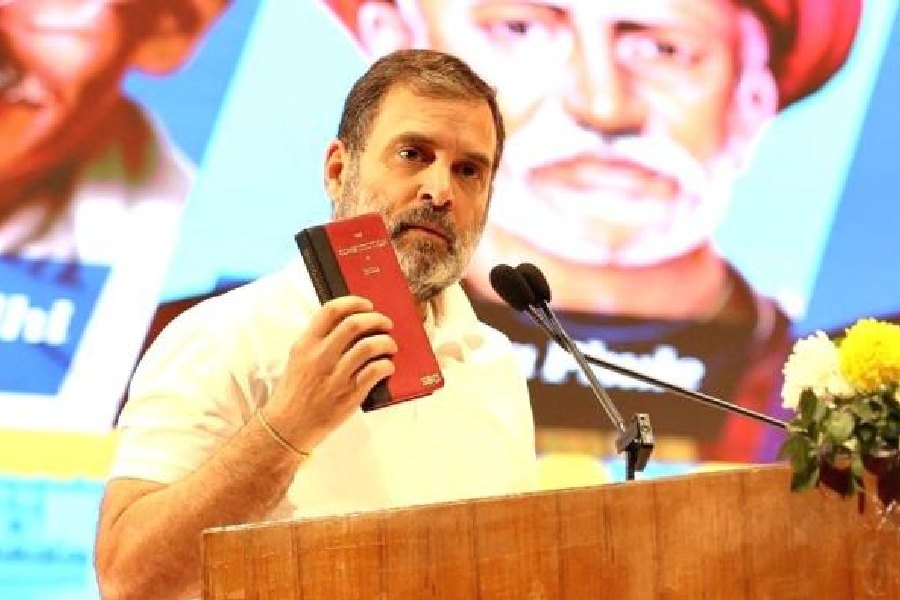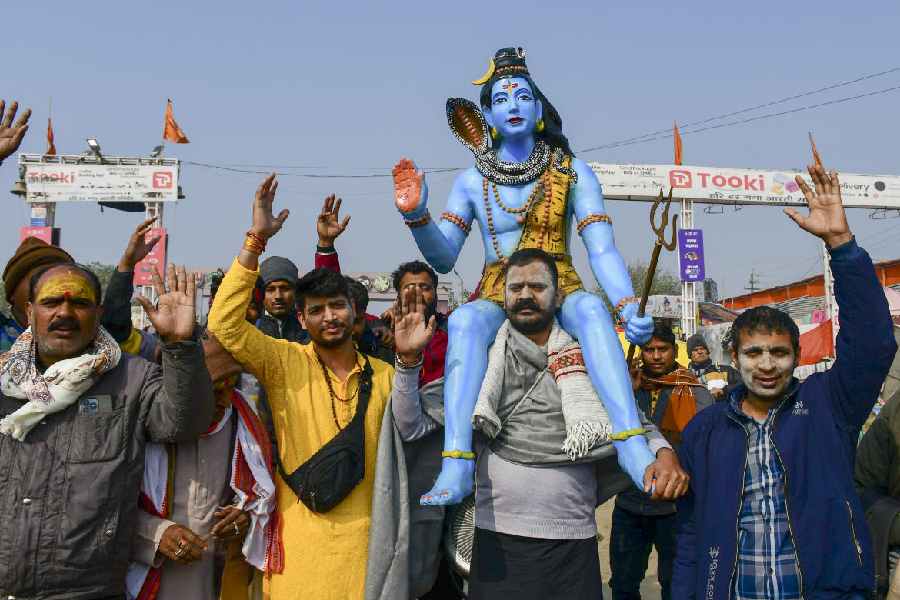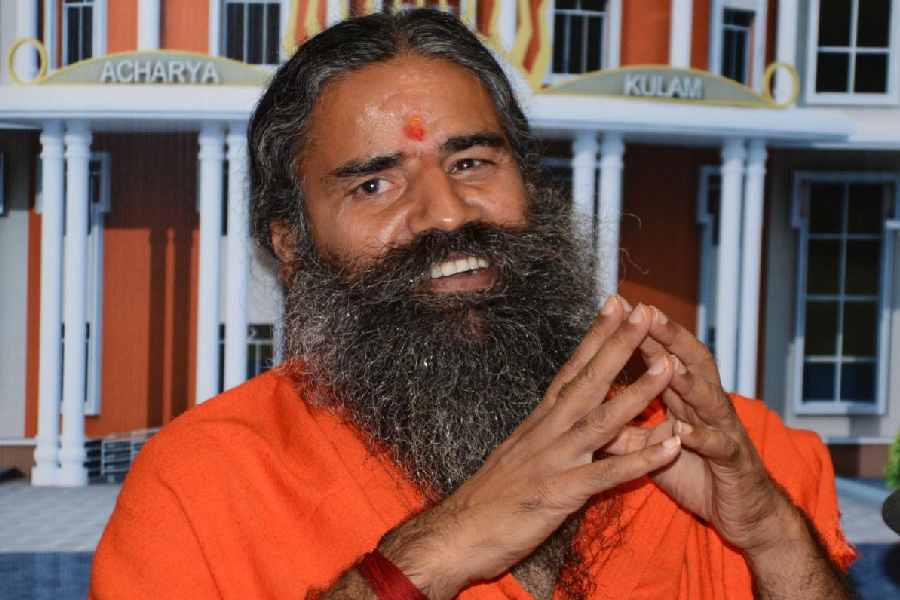 |
An old image of Vidya Balan pops up in my mind. We are winding up after a party. Vidya has been the life and soul of the evening. And now, as we are calling it a day, she is pitching in to help with the dirty dishes.
That was about 10 years ago. Vidya had then just dropped out of Ekta Kapoor’s TV soap Hum Paanch and graduated in sociology from St Xavier’s College, Mumbai. Even then, she was special. At a media workshop, where we first met, she merged with the backdrop, and yet stood out. Her eyes spelt mischief, but a steely determination peeped out from beneath her low-key demeanour. It seemed as if, step by step, she was negotiating her way up.
And now, after all these years, she hasn’t changed. The spirited eyes are the way they were and she greets me with the same warmth and energy that I identify her with. But there is a difference — the 32-year-old has a spring in her step, and a confidence that comes with success.
She is dressed in her trademark salwar kameez and adds that she “enjoys” wearing Indian clothes. “I feel so feminine in them. I must be in some kind of a time warp. I should have been born 35 years ago when Mumtaz and Sharmila Tagore ruled the roost.”
With her freshly bathed tresses, she reminds me of Lolita — the role that she marked her arrival with in the 2005 film Parineeta. She recalls how for the first time shutterbugs started trailing her. “My life changed completely. And even as I welcomed success with open arms, I so desperately wanted to cling on to it that I forgot how to take chances.”
The result was Heyy Babyy and Kismat Konnection — two films in which she failed to live up to her fans’ expectations. “I thought I could go through those films without much effort,” she says. “But my indifference showed — and how!”
Even her dress sense came in for flak. Her clothes didn’t suit her and her flab showed. Her critics cackled, and even her peers made fun of her clothes at sundry award functions. “My clothes were a reflection of the same confusion in my mind of wanting desperately to conform to the candy floss norm of the industry in order to hold on to my success,” she says.
Then designer Sabyasachi stepped in with Paa — and Vidya was transformed. Suddenly, she looked good, the clothes suited her, and people were talking about her all over again. “Sabya showed me how to be myself.”
Paa turned out to be a pathbreaker in more ways than one. She also learnt to let go and take chances. The role was that of a mother of a boy called Auro who had a disease that aged him prematurely. “Initially I had serious doubts about playing Amitabh Bachchan’s mother. Moreover, how does one express love to a 13-year-old? I had no referrals to draw from. And I expressed all this to director R. Balki.”
A couple of days later, Balki called her to Jalsa, the Bachchan residence in Juhu. Amitabh was doing a look test — to check out his appearance (hairless, with a bulging forehead). Balki asked Vidya to get into her costume and take the test with him. “The moment I entered the frame, magic happened! And I was transformed into Auro’s maa,” she says.
The film brought her accolades and awards — and a spate of new offers. One such project is where she plays Sabrina, who campaigns to bring her sister’s killers to justice in No One Killed Jessica, a film based on the 1999 shooting of Jessica Lal. “The case reflects the kind of change that is taking place in our society where people are now being forced to take things into their own hands. If you want to see change, you’ve got to be the change.’’
Though she hasn’t met Sabrina in person, Vidya feels for her. “She was a regular sort who had to suddenly wake up to the idea of spending the next 11 years of her life fighting for justice. I don’t think anyone is prepared for this. It is circumstances that drive you and make heroes out of you.”
In her case, the circumstances took a while to crystallise. As a child, Vidya was always drawn to the screen — and remembers how, as an 11-year-old, she was smitten by Madhuri Dixit’s Ek Do Teen number. She would dance to the tune every day in front of the mirror. And every day, she would want to play a new role — sometimes a cardiologist, sometimes a tanpura teacher. “When you truly desire something from the bottom of your heart, just the way I did, the universe conspires to give it to you,’’ she says quoting Paulo Coelho.
The universe gave her what she wanted — but took its time. And this was despite the fact that she bagged her first TV role when she was only 15. With sister Priya taking charge of her hair, make-up and biodata, Vidya got herself photographed in a local studio. She sent her portfolio to the show’s producers — and was chosen out of 900 applicants. “I owe my career to my sister,” she chuckles.
After eight months of shooting, the show was shelved because the channel went bust. The producers sent the actors to producer Ekta Kapoor who was making her first daily soap. And Vidya was offered the role of Radhika in Hum Paanch.
But when the series started affecting her attendance at college, her parents — her father worked in the private sector and mother was a homemaker — insisted she withdraw. She did so — continuing with ad films (she appeared in 90-odd commercials).
It was during one of her commercial shoots that she was approached by a model co-ordinator to star in a Malayalam film. “Who’s in it,” asked a cocky Vidya. Mohanlal, she was told — and Vidya jumped at the opportunity to work with her favourite star. Halfway through the film, the director and Mohanlal fell out, and the film was scrapped. But by then there was already a positive buzz about this Malayalee actress from Mumbai and Vidya had signed on some 15 films.
What she didn’t know was that she had been labelled “jinxed” and was rapidly being replaced in all the films she had signed. “They didn’t even bother to inform me. My mother would get the Malayalam papers and discover that the films I was to be a part of had gone on the floors without me.”
Vidya was unceremoniously thrown out of a Tamil film to be made by K. Balachander of Ek Duje Ke Liye fame after being told that she was not good looking and couldn’t act. “I didn’t know what was going wrong. It was extremely painful. They made me feel really worthless. My confidence was dented to the extent that I stopped looking into the mirror.”
At a point of low self-esteem, while working on an ad film, her path crossed that of adman Pradeep Sarkar. Sarkar wasn’t very impressed with what he saw. “The magic is missing,” he said about her to one of his assistants. He was casting for a music video and was reluctant to call Vidya for the screen test.
“It was at this stage that I had begun to pray,” she says. She recounts how once she was so badly shaken that she walked into a Sai Baba temple near her house in Chembur. “In those moments of self doubt, I think somewhere my faith in myself and in God got strengthened. I left that temple with courage.”
She got called for the test and was selected. After shooting for the video all night, Sarkar said to her: “Ay ladki, tere saath main film banaunga (Hey girl, I will make a film with you).” Vidya — the bitterness of past experiences still fresh in her mind — wasn’t convinced, but Sarkar was. “Without sounding dramatic, if I am sitting here today, it is because of that man’s faith in me,” she says.
She went on to work in videos and ad films with him, and even assisted him. “That is why people began insinuating things about Dada and me. It was literally like a mentor-student, a guru-shishya relationship — I was raw clay and he was moulding me.”
And then Parineeta happened. Sarkar’s directorial debut featured Vidya in the lead — and went on to become a hit. “All the things that didn’t work, didn’t work because I was meant to do a Parineeta. That fire wouldn’t have been there otherwise.” Vidya says she wasn’t nervous though she was paired with Sunjay Dutt and Saif Ali Khan. “It could have been George Clooney or a tree for that matter. I would have made love to the tree if I had to, because I was driven by the passion to prove a point. I had to prove it to myself — for every moment that I had considered giving up on my dreams. I wasn’t going to get intimidated by anything or anyone.”
Today, she says, she is at peace with herself. Pointing to a Buddha framed on her wall, she says, “I am calm and serene inside me. I have no fears. I have come full circle.”











